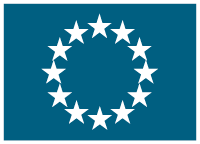Strengthening environmental control in Turkey, reinforcing the National Reference Laboratory of Gölbasi
Start date: Feb 1, 2002,
End date: Feb 1, 2005
PROJECT
FINISHED
Background
Turkey is currently revising its national environmental policies to be in line with European environmental legislation and standards. At the time of the project, the Turkish Parliament was considering a number of measures covering air and water quality. A financing agreement had been signed between the European Community and Turkey in 1990, providing â¬2.5 million towards the establishment of an environmental reference laboratory, but national funding constraints had, however, hindered the laboratoryâs effective functioning at a national level. Furthermore, there was little co-operation between the various regional structures in place.
Objectives
The project aimed to promote a comprehensive national Air and Water Quality Control Programme to identify pollution sources and develop pollution prevention and control actions in Turkey. Specifically, this was to be achieved by strengthening the technical and operational functioning of the GölbaÅı National Reference Laboratory (NRL) so that it could fulfil its intended function of providing regular and frequent monitoring and control of water and air quality throughout the country.
In particular, the project was to audit the existing GölbaÅı National Reference Laboratory structures; review the laboratoryâs organisation; introduce Quality Assurance ISO 9000; revise standards for water pollution analytical methods; develop a national control network for water pollution; organise a national water quality mapping system; create national calibration references for air monitors in relation to EU standards; and transfer methodologies in the measurement of traffic pollution.
Results
The project carried out a number of activities but failed to achieve most of the specific objectives.
It reviewed the laboratory organisation and set up a new structure. The laboratory was equipped with new equipment, training was provided to the laboratoryâs staff, and work started on new sampling and ISO 17025 accreditation procedures. However, after the merger of the Ministry of Environment and the Ministry of Forests, the laboratory lost about half its staff and the first results of Task 1 were rendered redundant (the laboratory was downsized, trained staff were dismissed, and the work on procedures was abandoned).
The project team repaired a mobile water quality measurement unit. They carried out two water quality field studies over the course of the project and apparently one afterward. The partner organised training sessions on water quality management for the laboratoryâs staff.
In general, the project undertook some activities relating to the water quality management task but did not reach the specific objectives: to organise a national water quality mapping system and develop a national control network for water pollution.
The project team carried out one air quality management field study over the course of the project and the partner organised training sessions for the laboratoryâs staff.
The project carried out very few activities related to the air quality management task, and consequently was far from reaching the specific objectives: to create national calibration references for air monitors in relation to EU standards and transfer methodologies in the measurement of traffic pollution.
No dissemination activities were undertaken.
Get Access to the 1st Network for European Cooperation
Log In
or
Create an account
to see this content
Coordinator
- Eyüp YAHSI
- (Turkey)









